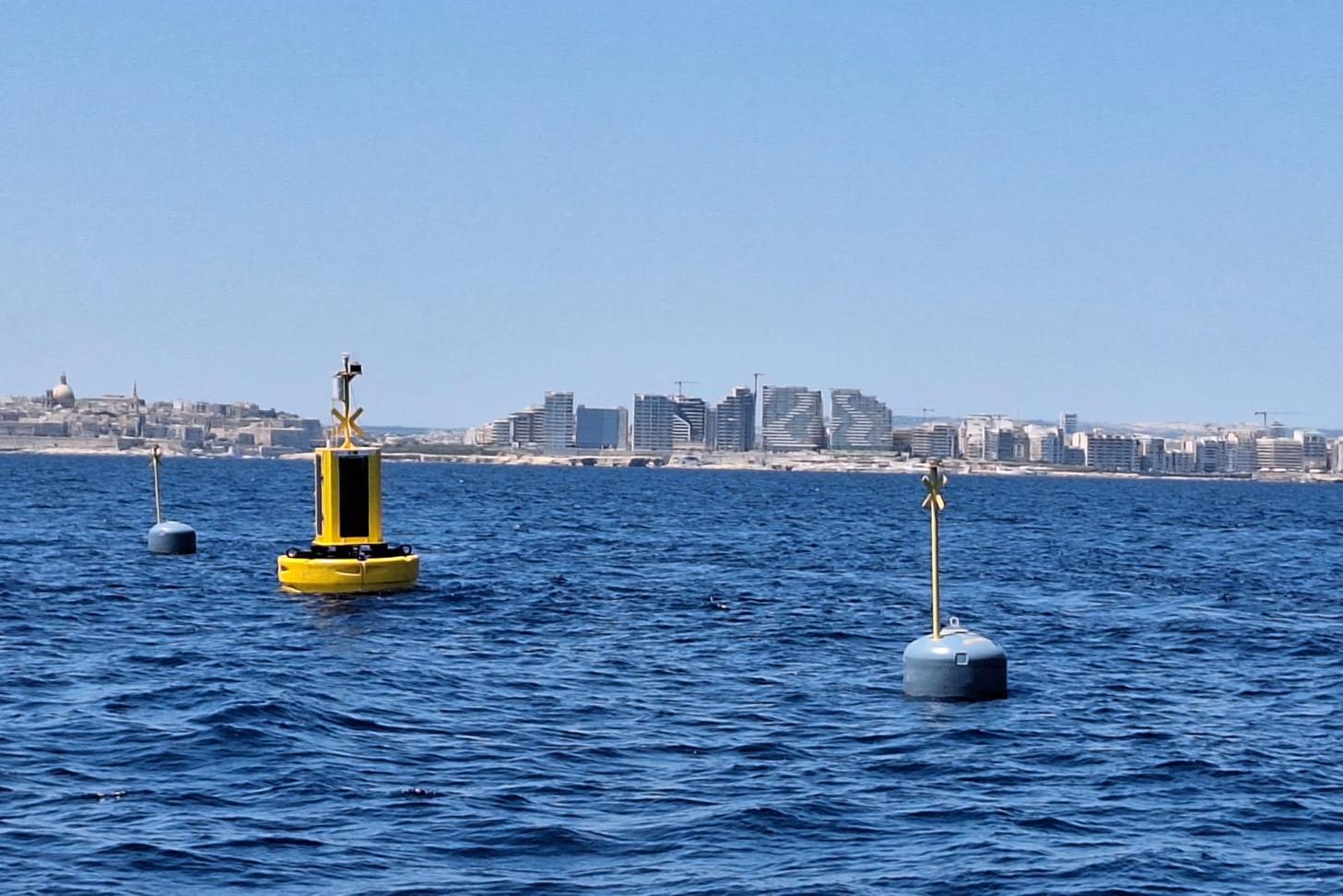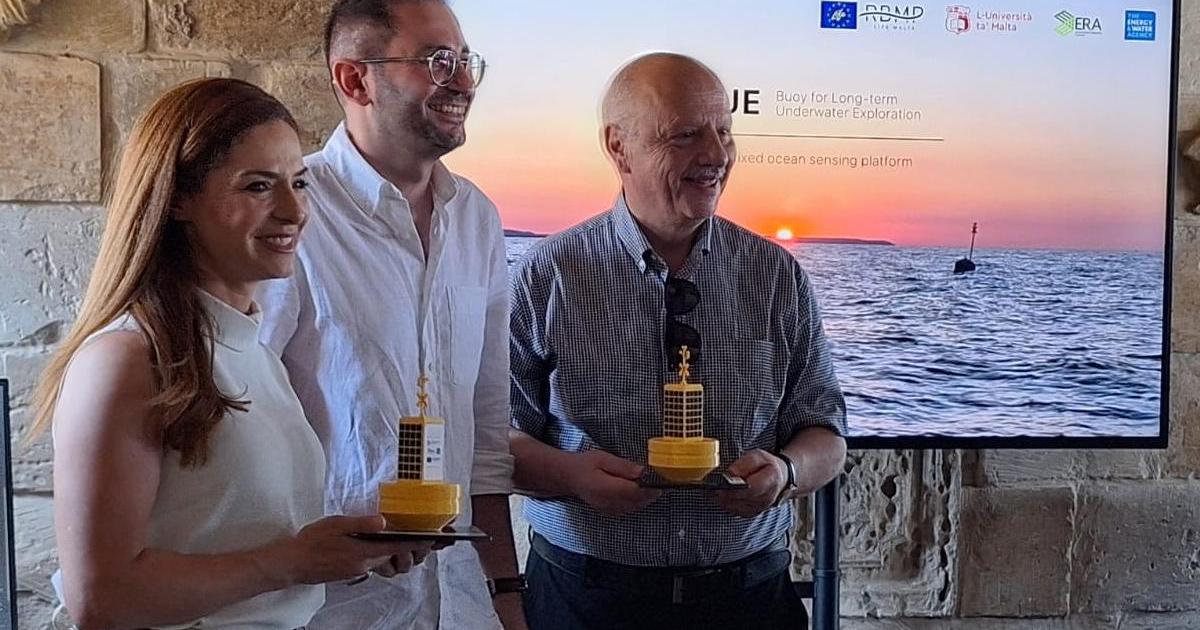Malta’s first fixed ocean observatory has been officially launched 3.7km off the coast of the Grand Harbour, providing researchers and authorities with a powerful new tool to monitor marine and weather conditions in real time.
The observatory, named BLUE, Blue Long-Term Underwater Exploration, is a high-tech buoy equipped with a series of sensors that collect continuous data on oceanic and atmospheric conditions.
The information is then shared with researchers and public agencies to support environmental monitoring and research.
 BLUE , the yellow buoy. Photo: Emma Borg
BLUE , the yellow buoy. Photo: Emma BorgSpeaking on Friday during the public launch, Environment Minister Miriam Dalli said:
“Data is key. We need to continue working all together so that we can all benefit from this data.”
Dr Adam Gauci, a lecturer at the University of Malta’s Department of Geosciences, is one of the researchers leading the project, which has been in development since 2022.
“Real-time data from BLUE is sent to the University of Malta every 10 minutes. From there, we share the information with the necessary authorities,” he explained.
The observatory supports a wide range of applications, including real-time environmental monitoring, marine research, fisheries and aquaculture, forecasting and modelling, and the calibration and validation of satellite data.
Standing four metres high, 2.6 metres wide, and weighing 2,400 kilograms, the buoy features multiple capabilities.
It measures wind, atmospheric pressure and air temperature at the top, wave patterns and currents at the surface, and uses a winch to lower sensors into the water column as far down as 85 metres. These underwater sensors collect data on temperature, salinity, oxygen, carbon dioxide, and pH levels.
“BLUE will be feeding data continuously,” said ERA Unit Manager Mirianne Rizzo. “It will help us predict and define the sustainable needs of our waters. Above all, it’s a clear example of how science and policy can work hand in hand.”
The project forms part of the €17 million LIFE IP RBMP initiative led by the Energy and Water Agency (EWA). BLUE itself was procured at a cost of €330,000 under the same programme.
However, Dr Gauci noted that this amount only covered the launch, and ongoing use of the observatory requires further funding. Annual maintenance is estimated at €30,000, with annual insurance costs adding another €20,000. The team is currently seeking investors to ensure the observatory’s continued operation.
Looking ahead, Dr Gauci and his team hope to develop the project further by launching a web service and equipping BLUE with cameras and air quality sensors.
The initiative is possible thanks to the University of Malta as well as government entities such as ERA, EWA, Transport Malta, the Armed Forces of Malta (AFM), the Superintendence of Cultural Heritage, the Malta Communications Authority, and the Continental Shelf Department.
